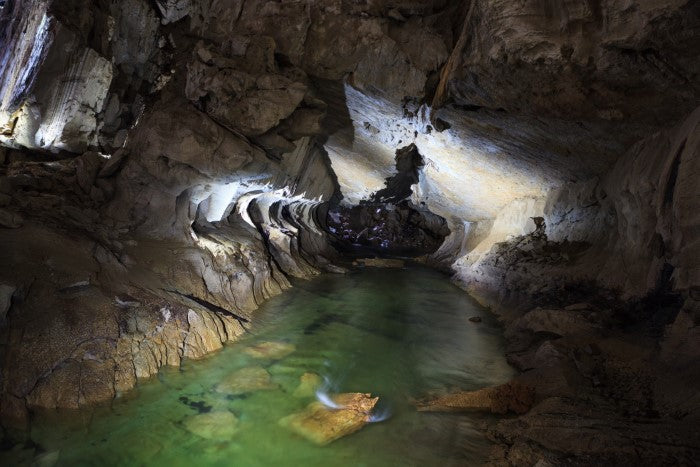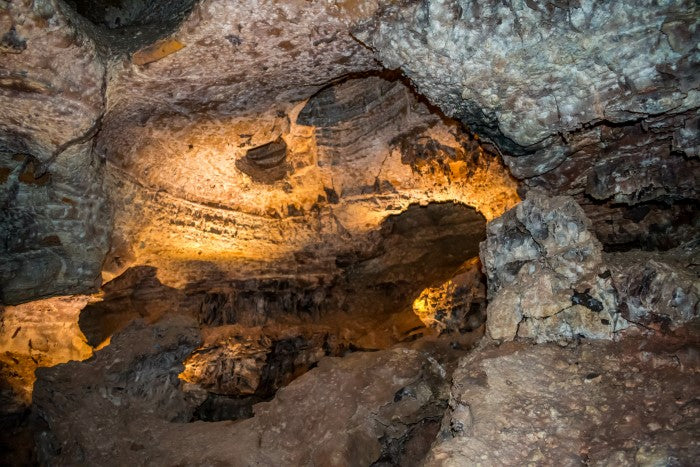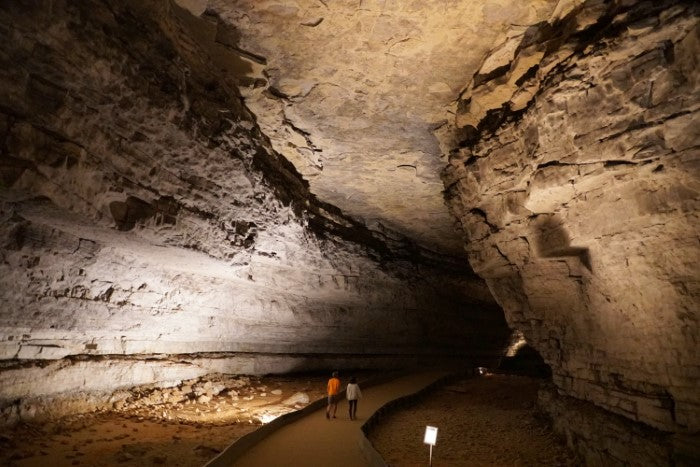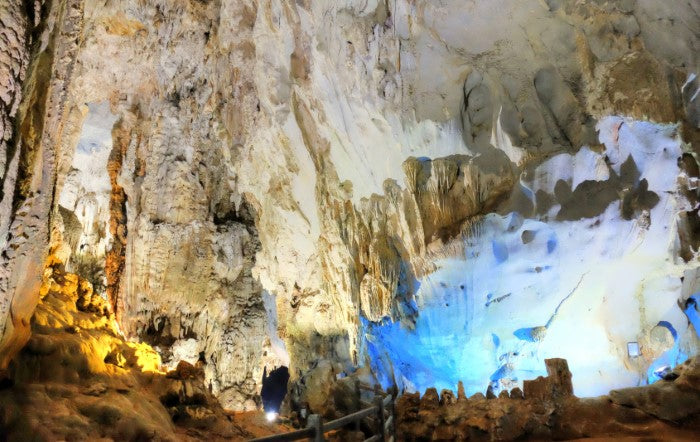CONTENTS
Top 10 Largest Caves In The World - Unbelievable Cave Systems
Caves are some of the most mysterious and bewitching places on the planet. They are often seen as a gateway to the former Earth, the prehistoric Earth before it was trodden by human civilization. Every inch further we advance into these tunnels, we get another glimpse of history, hence why exploring these caves is always extremely popular among sports enthusiasts and historians alike.
Caves are defined to be underground hollow space. They come in all shapes and sizes, and there are probably millions of them around the world. Around 17,000 caves with an entrance (or entrances) have been discovered in the United States alone, and thousands if not millions more that are entranceless and are waiting to be found.
As diverse as they are, it wouldn’t be surprising to know that there are some that stand out, especially in terms of enormity. It may come as a surprise to you to find out that some big caves dwarf even a skyscraper. Which one are they, you may ask? Read on to check the top 10 largest caves in the world.
Top 10 Largest Caves in The World
Clearwater Cave System, Malaysia
The Clearwater Cave System is a massive, interconnected cave system that is located in Gunung Mulu National Park, Sarawak, Malaysia. It’s believed to be one of the biggest caves in the world by volume and currently is the 9th longest cave in the world, with its combined length of up to 236.796 km (which could increase as explorations continue).

Clearwater Cave, discovered in 1978, was the system's first major component, having been explored to a length of 51 kilometres across many excursions from 1978 to 1984. A modest expedition connected Cave of the Winds and Clearwater in 1988, and uncovered the 24km long Blackrock Cave, which was connected to Clearwater in 1991. In the same year, another 15 kilometres of route were constructed to Clearwater Cave, but the main move would have to wait another 12 years, until 2003, when Whiterock Cave was discovered to the north of Blackrock. Initially, it was assumed that the new discovery would rapidly join Blackrock, and while it did, Whiterock also ran wild into the mountain, stretching 101 kilometres across eight excursions in 2005, 2007, 2009, 2011, 2013, 2015, 2017, and 2018. Whiterock Cave is now the most important part of the Clearwater system.
With the construction of caves like Drunken Forest and Leopard Cave, the Clearwater System now has a total length of 227.196 kilometres (October 2018), with presumably much more to come.
Lechuguilla Cave, New Mexico, USA
Lechuguilla is the eight-longest cave in the world that has been explored with the total length of 242 kilometres. It’s also the second deepest cave in the continent of America, reaching 489 metres deep. It’s most famous for its peculiar geology, unique formations, and excellent condition.

Until 1986, Lechuguilla Cave was regarded as a minor historical monument in the park's wilderness. A mining claim filed in 1914 allowed for the extraction of small amounts of bat guano from the entrance passageways for a year. A 27-metre entrance pit led to 122 metres of dry, dead-end tunnels in the old cave.
After mining activity halted, the cave was rarely visited. In the 1950s, though, cavers heard wind howling up from the cave's rubble-choked floor. Despite the lack of a clear path, several people came to the conclusion that cave passages lie beneath the rubble. In 1984, a group of Colorado potholders obtained National Park Service authorization to begin digging. On May 26, 1986, a breakthrough into huge walking corridors was made.
What followed was some of the most thrilling cave exploring the world has ever seen, in one of the world's most beautiful caves. As said above, it became one the world’s most impressive cave systems.
While it’s unfortunate that the cave isn’t open for tourism, it's still an exciting stop for many scientists and researchers to study it.
Wind Cave, South Dakota, USA
Located in western South Dakota, Wind Cave rests in the top 10 largest caves on Earth. The cave is noteworthy for its boxwork calcite formations as well as its frostwork. It is home to over 95 percent of the world's discovered boxwork formations. The cave is known as the world's densest cave system, with the largest channel volume per cubic mile. Wind Tunnel is the third longest cave in the United States and the seventh longest subterranean in the world, with 248.16 kilometres of excavated cave passageways (as of 2021).

Besides the spectacular interior of the system, the exterior is no less mesmerising. Above the ground, it includes the biggest existing natural mixed-grass prairie in the United States. With such astounding scenery and tourism potentials, it was the first cave to be named a national park in the world when President Theodore Roosevelt established it on January 3, 1903.
The coinage of its name is interesting as well. You could say that it’s called the Wind Cave because, well, it’s windy. But why it’s windy is the interesting part. For such an extensive and deep-reaching cave system, it has few entrances, resulting in the constant flow of air into and out of the case to equalise the atmospheric pressure of the cave and the outside air, causing a “breathing” phenomenon, which to us is strong wind flow, hence the name.
Shuanghedong Cave Network, China
One of the largest yet one of the most mysterious cave systems on the planet, Shuanghedong Cave Network is a cave system full of surprises.
Optymistychna Cave, Ukraine
Located in Ukraine, the Optymistychna Cave is currently the 5th largest cave on Earth, with approximately 230 kilometres of passageways that have been mapped. It’s the longest cave in Eurasia alone and the 5th longest cave in the world.
The cave’s name actually means “optimistic”. The reason behind this is, when it was first discovered in 1965, experts didn’t expect it to exceed 3 kilometres in length or depth. However, optimistic members of Tsyklop club (who originally discovered the cave) set up further expeditions. Therefore, after no less than 170 expeditions, the cave is now the longest gypsum cave in the word. The name pays homage to those who had faith in the cave.
Ox Bel Ha System, Mexico
The Yucatan Peninsula is renowned for sandy beaches, crystal-clear water and Mayan ruins. Little do people know, one of the most remarkable marvels of this peninsula is hidden underground, which is the Ox Bel Ha system. The cave system reaches a cumulative length of 270 kilometres.
The name of the system, Ox Bel Ha, means “Three paths of water” in Mayan, is one of the region’s vital fresh water sources. Divers and scholars have long regarded this complex system of limestone tunnels and corridors as one of the Yucatán Peninsula's most fascinating. It was, however, one of the latest of the region's four largest to be examined, with work on mapping begun in 1998, nine years after the adjacent Sac Actun, another incredibly vast cave system that we will introduce later on, was first discovered.
There are reasons why, despite expert’s awareness of its existence, little explorations were conducted until 1998. The most accessible opening cave to the system was anything but exciting. Moreover, the tunnels that the cave is marked with are unpromising and unattractive, especially considering the fact that efforts were being put into more attractive exploration projects in the meantime. Entrances with more potential, however, are located inland and are daunting to approach. Still, explorations ultimately started, and what we have now is the top 10 largest caves in the world.
>> Check out: Best Beach Destinations For Summer Vacation
Jewel Cave, South Dakota
Don’t be mistaken, this cave isn’t full of jewels. The name stems from the colourful crystal that resides inside the cave. Regardless, with 322 kilometres of passageways mapped, it is one of the largest and longest caves in the world.
The cave system is a very popular tourist destination thanks to its intriguing interior. There are mainly three services: the scenic tour (an elevator loop through the central portion of the cave), the historic tour (a candlelight tour through the originally discovered part of the cave), and the wild caving tour (a tour through the undeveloped zone near the scenic tour).
Sac Actun, Mexico
Currently, stretching over 345 kilometres, the Sac Actun in Mexico is the largest underwater cave system and is one of the largest cave systems known to mankind.

Explorations of the Sac Actun began in 1987 from what is called Gran Cenote (cenote is the local word for sinkhole), and by 2007, after it was connected to a smaller cave system, it was throned the longest case system in the world, with the aforementioned Ox Bel Ha system coming in second.
Since then, the two cave systems had been in close competition with one another, frequently playing tug of war for the title for the longest cave system every so often after further expeditions. That was, until 2018 when a connection between Sac Actun and Dos Ojos (which was about 84 kilometres at the time). Naturally the larger cave absorbed the smaller one and Sac Actun takes the cake as the largest cave system in all Mexico.
Mammoth Cave, USA
Reaching a whopping 680 kilometres in length, nearly twice as long as its most possible competitor – the Sac Actun, the Mammoth enthroned as the globe’s longest cave system in the world.

Unlike most other cave systems on the list, which were discovered and explored fairly recently, the Mammoth Cave’s history spans thousands of years, with geological, political, and spiritual importance. Remains of Native American have been discovered, most of which exhibited connections with pre-Columbian funeral practices. The supposed earliest “explorer” to have been retrieved was a pre-Columbian miner who was found overlain by a massive boulder. He is named “Lost John'' and his remains are exhibited to the public.
No official information was recorded, but legend has it that the cave was probably already known as a massive cave system prior to the 19th century, with some of the earliest evidence dating back to the War of 1812. From then, parts of the cave were heavily involved in either industrial or political wranglings, until 1941 when it was established as a national park. Since then, more explorations have been conducted. In 1972, it was unified with the Flint Ridge system, effectively crowning it the longest cave system in the world.
Son Doong Cave, Vietnam
Other caves might be long, but none holds a candle when it comes to space compared to this one absolute monstrous cave in Son Doong.

Son Doong was found in 1991 by a local who lived nearby and was first expedited by the British-Cave-Research-Association-led team in 2009. Till this day, very little is known about this system, besides the fact that it’s estimated to be three million years old, and the fact that it dwarfs every single other known cave system in the world by a long shot, capable of housing a forty-storied skyscraper like a child’s play.
Into the Depths: A Conclusion to Our Exploration of the Largest Caves in the World
As we reach the end of our exploration into the largest caves in the world, we are reminded of the sheer diversity and grandeur that lies beneath the surface of our planet. From the skyscraper-dwarfing chambers of Son Doong Cave in Vietnam to the historic depths of Mammoth Cave in the USA, there's no denying the allure of these underground realms.
They beckon with the promise of discovery and adventure, inviting explorers to uncover secrets that have remained hidden for millions of years. As we continue to map these subterranean landscapes, who knows what other mysteries we will uncover?
We invite you to share your thoughts and reflections in the comments below. Which cave sparked your curiosity the most? Are there any caves you dream of exploring? Share this article with fellow explorers and cave enthusiasts, and let's continue the conversation as we unearth the wonders that lie beneath our feet.
Khoa Pham














jUST A WONDERFUL COLLECTION OF NATURAL WONDERS THAT ARE BREATHTAKINGLY INSPIRING.
Thank you for the beautifully informative article!
Leave a comment